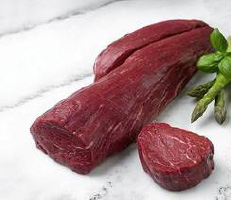Beef

Beef: nutritious, marbled and hearty
Beef refers to pieces of meat from young female bovines (heifers), older cows, bulls and oxen. For many beef dishes, using the right cut of meat is essential if they are to be a success. The tenderest beef cuts generally come from the loin and the inside of the legs.
The harder the muscles have had to work during the animal’s lifetime, the coarser the fibres of the meat will be. Short-fibre cuts require less cooking time than coarse-fibre cuts. The maturing process is also very important, because only meat that has been hung for a substantial length of time and developed distinctive marbling will be tender and juicy.
Round
Consists of topside, silverside and the eye, and is boiled or roasted
The tender topside meat is ideal for large roulades and exquisite roasts, and is also suitable for lean steak tartare, fondue meat and beef steaks. The muscle meat of silverside is perfect for boiling, curing and braising. It is particularly tasty in a goulash or as a roast or roulade.
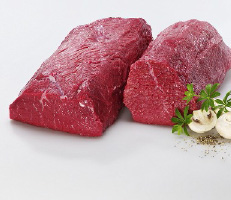
Forerib
Juicy and nutritious
The forerib is taken from the front of a bovine’s loin. Fine streaks of fat running through this muscle meat make it very juicy, and it is particularly flavourful grilled or roasted on the bone. The forerib is used for côte de bœuf.
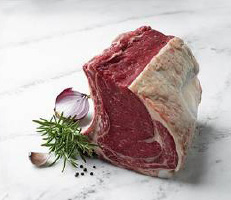
Rump
Tender and juicy
The meat of a bovine’s rump has a loose texture and has fine streaks of fat running through it, which makes it tender and juicy. It is best eaten fried or braised, but can also be enjoyed in the form of roulades, roast beef or rump steaks.
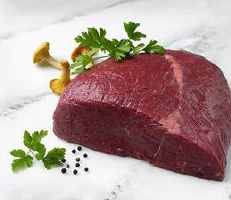
Middle rib / chuck rib
For hearty dishes
This juicy piece of beef cooks beautifully when boiled, braised or roasted, which makes it perfect for tasty sauerbraten, hearty stews and delicious goulash dishes. If hung for long enough, it is also great for fondue.
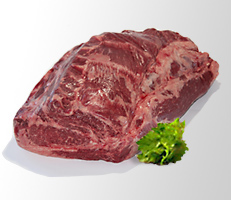
Shoulder
Consists of the prime shoulder piece, the clod and the chuck fillet
Nice roasting joints can be cut from a bovine’s shoulder, including the prime shoulder piece, the clod and the chuck fillet. This cut gets its name because of the similarities it shares with the real fillet, though it is less compact and has fine meat fibres running through it. The chuck fillet is best used for larded and pot roasts, but also makes delectable braised-beef ragouts, stews and sauerbraten.
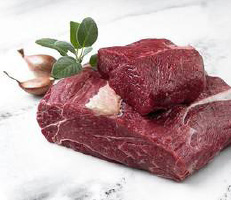
Brisket and thin rib
Predestined for boiling
A bovine’s brisket point provides firm meat covered in a layer of fat and is excellent for boiling. It remains nice and juicy when it’s cooked, because it’s fleshy and has layers of fat running through it. It produces good hearty and nutritious stews.
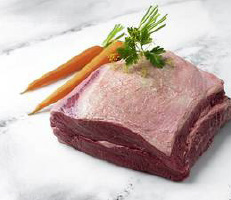
Sirloin
Made for medium-rare steaks
Sirloin is particularly juicy and is generally fried until medium rare. Before it is served and cut, sirloin should be allowed to cool so that the temperature difference between the hot surface of the meat and its warm core is eliminated. Large classic steaks are cut from sirloin.
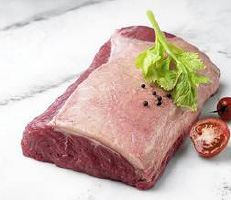
Fillet
The premium cut
The prized fillet cut of a bovine lies just beneath the sirloin. As the animal’s back muscles are subjected to less stress than other muscles, the fillet is especially tender and fine-grained. It is used to prepare fillet steaks, chateaubriand, tournedos, filet mignon and medallions, the smallest and finest steaks. The thin fillet tail is perfect for beef stroganoff and fillet goulashes
